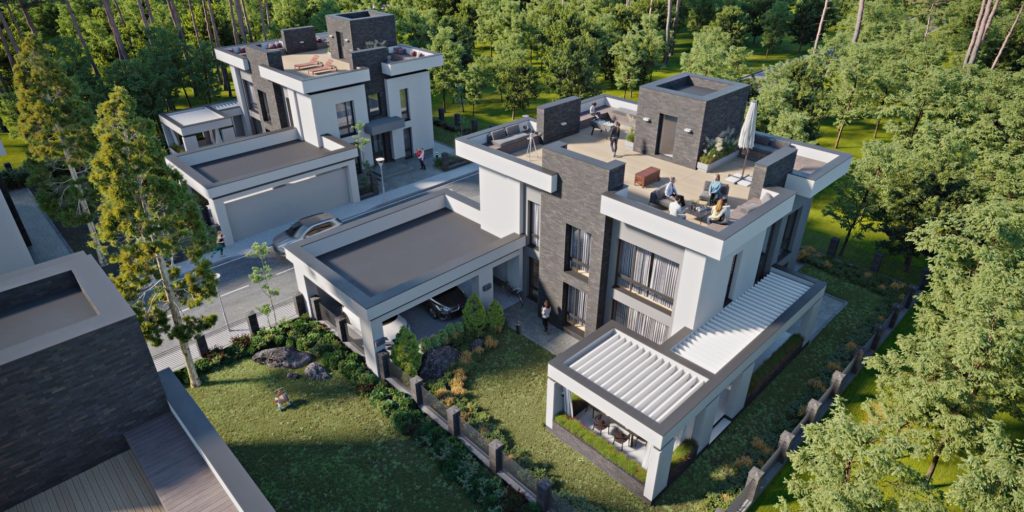When choosing a new roof for your commercial property, there are a number of things to consider, including the local weather conditions, the style of the property and the longevity of the roofing materials. Two popular commercial roofing choices are the single ply roof, and the hot melt roof. So what are these two roofing types? And what are the differences? Well, here at Enviroply Roofing, we are the North West’s leading commercial roofing professionals. And this is our guide to single ply V hot melt roofing.
What is hot melt commercial roofing?
Hot melt roofing involves applying a waterproof membrane in the form of a hot liquid, directly onto a prepared roof or structural deck. Although this type of roofing involves working with potentially dangerous hot materials and liquids, it does create a seamless result that is difficult to damage and has a very long life expectancy. This roofing option uses a two layer bituminous rubber system, with an approximate depth of 6mm, with reinforced fleece between the layers, and a fully bonded felt layer over the top. This is suitable for bonding with concrete, timber, brickwork and other materials, easily covering surface irregularities.
What is single ply commercial roofing?
A single ply roof involves a single sheet of roofing material that is fully waterproof, weatherproof and UV resistant. This can be installed using ballast material, mechanical fixings or full adhesive, resulting in a cost effective, fully protective roofing system. The single ply membrane is generally applied over the top of the roof deck, the insulation, and the vapour control layer.
Single ply V hot melt roofing: a comparison
Both of these roofing types provide effective structural and weather protection. So to compare them, let’s take a look at some of important factors from the point of view of the consumer. These include:
- Longevity
- Cost
- Foot traffic areas
Longevity
One of the most important concerns for any consumer choosing a new roof is the longevity, or expected lifespan of the roof. Replacing your commercial roof, and then needing to repair or replace this again in just a few short years is never an ideal situation. So how does singly ply roofing compare with a hot melt roof? Well, a single ply roof can remain in good condition and stay effective for around 25-30 years. This provides great value for money. However, a hot melt roof has the longest durability within third party British Board of Agrément (BBA) accreditation, as a hot melt roofing system is accredited for the design life of the building. This means you might never need to install another roof again.
Cost
Of course, the budget is something that can be an important determining factor for all new roofing projects. In this department, single ply roofing tends to be cheaper, but of course this depends on the location and the project itself. In general, a single ply roof has a low initial cost, and is also quick and easy to install, which also reduces labour costs too.
Foot traffic areas
For some buildings, like plants and factories, heavy foot traffic is an expected requirement for the roof space. While a single ply roof can be a perfect choice for a green roof, or a ballasted roof, it does not have the durability to support extended and regular foot traffic. For this kind of purpose, you would need to consider a hot melt roof that can easily accommodate a slabbed walkway. Hot melt roofing can also be used effectively for intensive and extensive green roofing.
So, what are the advantages of single ply roofing?
Overall, single ply roofing can offer a number of benefits, including:
- A lower cost than hot melt roofing in general, although this is dependent on location and the project itself
- Generally quick and easy to install for a faster project completion
- Can be used to create complex visual details like standing seams and parapet details
- Being more environmentally friendly in comparison to hot melt roofing, and even built up felt roofing
And what are the advantages of hot melt roofing?
Overall, hot melt roofing can bring a range of benefits including:
- Increased longevity when compared to single ply roofing
- Successfully creating a variety of roofing types including walkways, green roofs and podium decks
- Hot melt roofing has no seams or joins so there is no risk of weather or water damage
- Can be used effectively for buildings with zero falls when proper drainage is in place
For more information about which type of roof would be a good fit for your commercial roof, get in touch with the team today, here at Enviroply Roofing.

